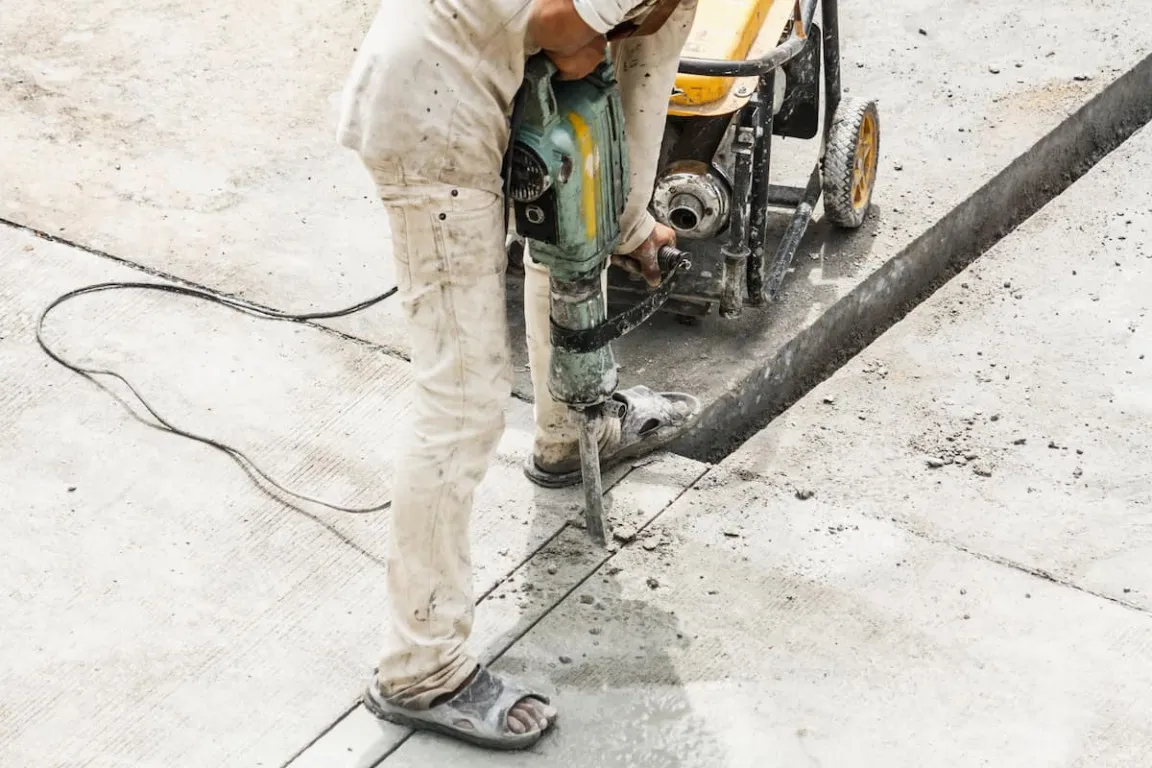Checking the grade of concrete is an important step to ensure the strength of buildings, especially public facilities, such as roads and bridges. This step is generally done during the construction project.
However, if, over time, there is a decrease in the quality of concrete so that cracks appear in the building, you can still overcome it with the concrete injection method.
What exactly is concrete injection, and how is it done? This article will give you the full explanation. So, let’s check out the following article thoroughly.
What Is Concrete Injection?
Concrete injection is a method of repairing concrete structures by injecting special materials into gaps, cracks, or voids in the concrete. Thus, this method does not involve demolition of the building at all.
The concrete injection method is often used in the maintenance of civil assets because its adhesive function is very strong, flexible, efficient, and cost-effective.
Uses of Concrete Injection
Broadly speaking, concrete injection is useful for repairing concrete structures. However, if explained more specifically, here are some uses of concrete injection:
- Closing structural cracks: Concrete injection is effective in closing gaps in concrete that have cracked under load or shrinkage, preventing further damage.
- Stopping leaks: In areas that are prone to leaks and seepage, such as basement areas or pools, concrete injection is required to seal the gaps for water ingress.
- Restoring structural strength: Concrete injection can be a solution to strengthen concrete and extend its lifespan.
- Inhibit damage from corrosion or erosion: Concrete injection can be part of an effort to repair deteriorated building structures, including those due to corrosion or chemical erosion.
Read also: Identifying the Cause of Wall Cracks and How to Fix
How to Inject Leaking Concrete
It was previously mentioned that one of the uses of concrete injection is to stop leaks in building structures. This problem can arise if there are cracks that widen over time.
If not handled immediately, the leakage can significantly reduce the strength of the building. Therefore, it is necessary to fill the cracks from front to back with low pressure and slowly.
This method allows the injection material to fill the cracks perfectly. As a result, the concrete structure can be rebonded, and the building can regain its strength. The following are the three stages that need to be passed in the leaky concrete injection process:
1. Conditioning the Site
In this initial stage, you need to clean the concrete injection area and remove any objects that might interfere with the work process, such as dust, dirt, grease, or moss growing in the area around the injection.
This process is necessary for the injection material to adhere and function optimally. In general, the cleaning process can use a wire brush, vacuum, or compressed air.
Next, scan the concrete, especially on the surface around the crack, to identify the cause or path of the leak. After that, mark the area of the crack with a line so that it can be a benchmark in carrying out the next process.
2. Preparing Tools and Materials
Once the injection area is sufficiently conducive and free of any obstructions, you can move on to preparing the concrete injection tools. If you are doing the concrete injection method on your own, here are some of the tools you need to prepare:
- Injection material: Either epoxy resin or polyurethane (PU) foam.
- Injection port: A small pipe installed along the crack to channel the injection material and help the injection process be more even.
- Surface sealant: A quick-drying material to seal cracks in the concrete surface before injection, so that the material only flows into the cracks. It is usually a quick-drying epoxy or other compound that hardens quickly and can be removed after the injection process is complete.
- Main applicator: Can be in the form of a gun for light scale and small area work, or an injection pump for large volume and high pressure work.
- Personal Protective Equipment (PPE): Part of construction OHS practices that aim to protect limbs from exposure to chemicals in the injection material, including the use of gloves, safety glasses, and respirator masks.
- Mortar: Usually, some users apply mortar at the finishing stage to improve the surface.
- Waterproof agent (optional): As an additional waterproof protection applied after the injection process is completed, especially used if the injection area is prone to moisture or water exposure.
3. Starting Concrete Injection
You can start the concrete injection process with the following steps:
- If the cracks are deep or long, install injection ports along the cracks at regular intervals (usually 6–12 inches apart).
- Apply surface sealant to all parts of the crack, except the injection port. This is to prevent leakage as you inject and to ensure the cement can fill the crack.
- Prepare the injection material according to the product instructions. Mix the material properly for strong adhesion and long-lasting functionality.
- Use the main applicator to inject the material into the crack through the bottom hole. Continue the injection process until material starts to come out of the next hole at the top, indicating the crack is starting to fill.
- Repeat the above process by moving from one hole to the next until the entire crack is filled.
- Wait for the injection material to dry, which generally takes a few hours to a full day, depending on the material used.
- Once the material is completely dry, remove the injection port and apply a surface sealant if you want to resurface the newly repaired area. You can also sand the rough areas so that they blend back into the surrounding concrete.
Read also: What Is Grouting? Understanding Benefits and Types
Causes of Concrete Damage
Concrete cracks or leaks are usually caused by the following reasons:
1. Bad Drainage System
A bad drainage system will increase the risk of holes and erosion of concrete and other building materials. Keep in mind that almost all properties are prone to damage if they have been exposed to water and moisture for a long period of time.
2. Bearing Heavy Loads
Concrete structures can suffer damage when they have to support heavy loads with high traffic for long periods of time. This load can come from the movement of machinery and vehicles, such as forklift trucks and lorries.
3. Wear and Tear
As buildings age, the risk of cracks appearing due to wear and tear factors may increase, especially if users do not provide proper maintenance. Keep in mind that maintenance is necessary in areas that are prone to water, such as roofs and balconies.
Best Materials for Concrete Injection
In general, three popular materials that are often used in concrete injection projects include:
1. Epoxy Resin
Epoxy resin is known for its excellent durability and strength, as evidenced by the wide use of this material on the floors of large buildings, such as factories, office buildings, and shopping centers.
Interestingly, epoxy resin is not only reliable for patching cracks that have already occurred, but can also provide pre-cracking treatment. You can simply patch a few porous spots on the building with this material, and the risk of cracks and leaks can be avoided.
Besides being superior in terms of strength, epoxy resin has a liquid form that will make it easier for you to do the concrete injection process.
2. Polyurethane
Next, the best material for concrete injection is polyurethane. You can use this material to seal small leaks in the form of cracks so that wider cracks will not appear.
Polyurethane is the perfect material to use for concrete injection in tunnels, bridges, and swimming pools.
3. Cement
With its good adhesion and relatively affordable price, cement can be used as one of the best materials in concrete injection methods.
The use of this material is also practical and efficient because its solid form is suitable for sealing large cracks.
In the implementation of cracked or leaking concrete injection, choosing the brand of cement will certainly affect the strength of the structure in the long run. For this reason, make sure to choose a premium quality cement, such as Semen Merah Putih.
One of Semen Merah Putih's products, Semen Merah Putih Watershield, is a super premium multipurpose cement product fitted with water repellent technology. This product also provides triple protection against water seepage from outside, inside, and soil or capillary water.
With these advantages, Semen Merah Putih Watershield is very suitable for use in the manufacture of foundations, concrete blocks, masonry, skim coat, and concrete injection, and has many advantages over ordinary cement.
To deal with cracking or leaking problems in your building, do not hesitate to choose Semen Merah Putih Watershield as the solution. If you want to get complete information about our products or need to consult to determine the product that suits your needs, contact us immediately!
Read also: 9 Concrete Wall Panel Design Inspirations for Your Home



